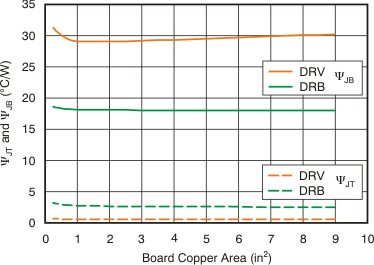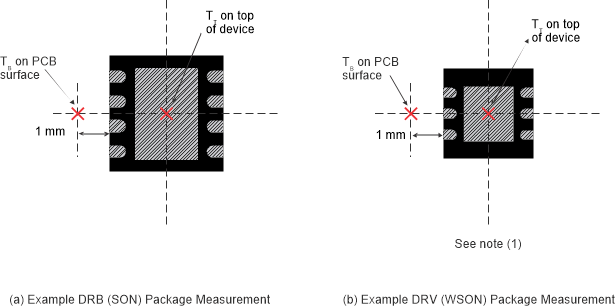ZHCSIE2M June 2008 – June 2018 TPS735
PRODUCTION DATA.
- 1 特性
- 2 应用
- 3 说明
- 4 修订历史记录
- 5 Specifications
- 6 Detailed Description
- 7 Application and Implementation
- 8 Power Supply Recommendations
- 9 Layout
- 10器件和文档支持
- 11机械、封装和可订购信息
封装选项
机械数据 (封装 | 引脚)
散热焊盘机械数据 (封装 | 引脚)
订购信息
9.4 Estimating Junction Temperature
Using the thermal metrics ΨJT and ΨJB, as the table shows, the junction temperature can be estimated with corresponding formulas (Equation 5), which are more accurate than the value of TJ through calculation with θJA.
Equation 5. 

where
- PD is the power dissipation calculated with Equation 2,
- TT is the temperature at the center-top of the device package, and
- TB is the PCB temperature measured 1 mm away from the device package on the PCB surface (as shown in Figure 25).
NOTE
Both TT and TB can be measured on actual application boards using a thermo‐gun (an infrared thermometer).
For more information about measuring TT and TB, see Using New Thermal Metrics, available for download at www.ti.com.
According to Figure 24, the new thermal metrics (ΨJT and ΨJB) do not depend on the copper area. Using ΨJT or ΨJB with Equation 5 can estimate TJ by measuring TT or TB on an application board.
 Figure 24. ΨJT and ΨJB vs Board Size
Figure 24. ΨJT and ΨJB vs Board Size 